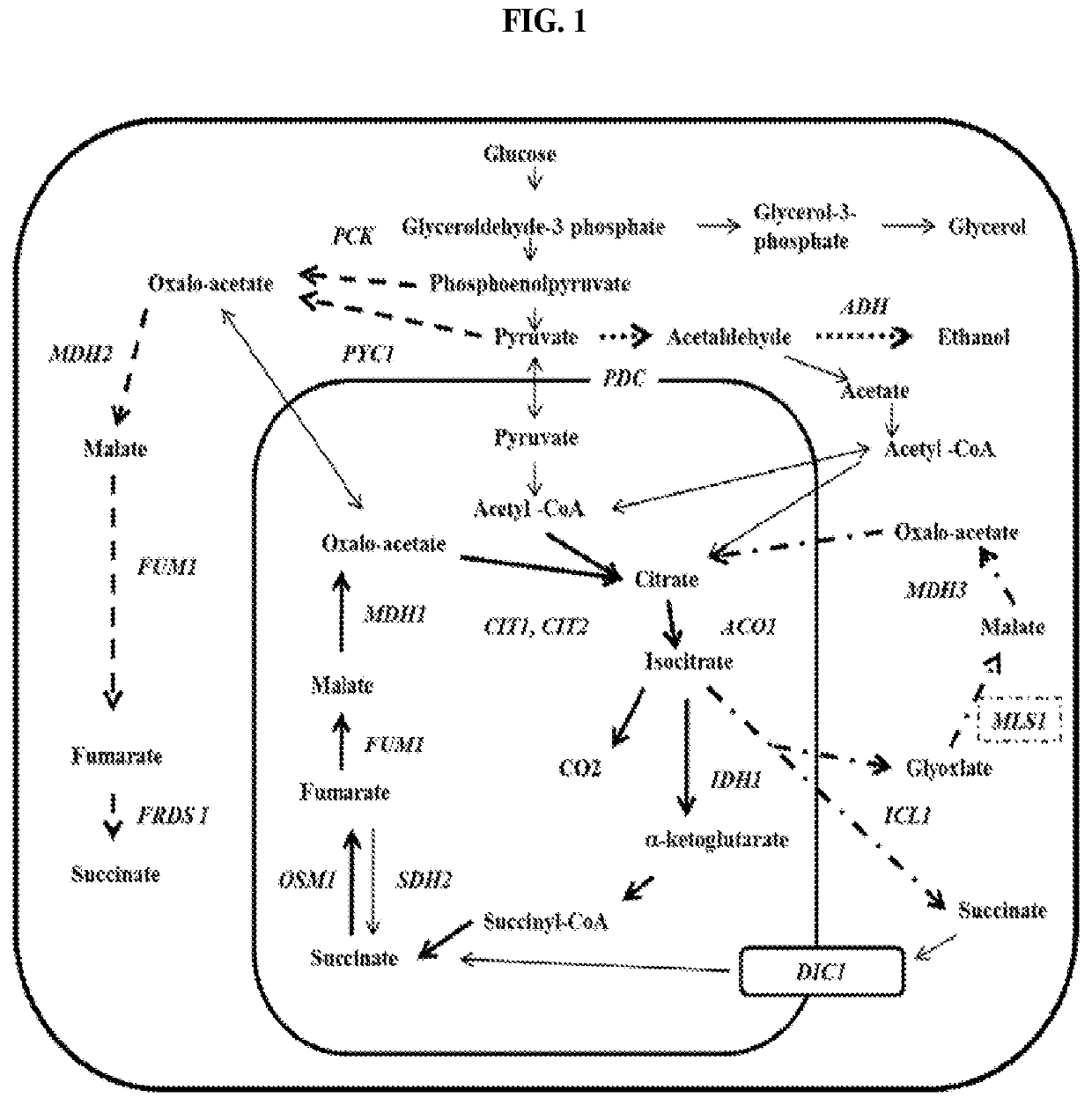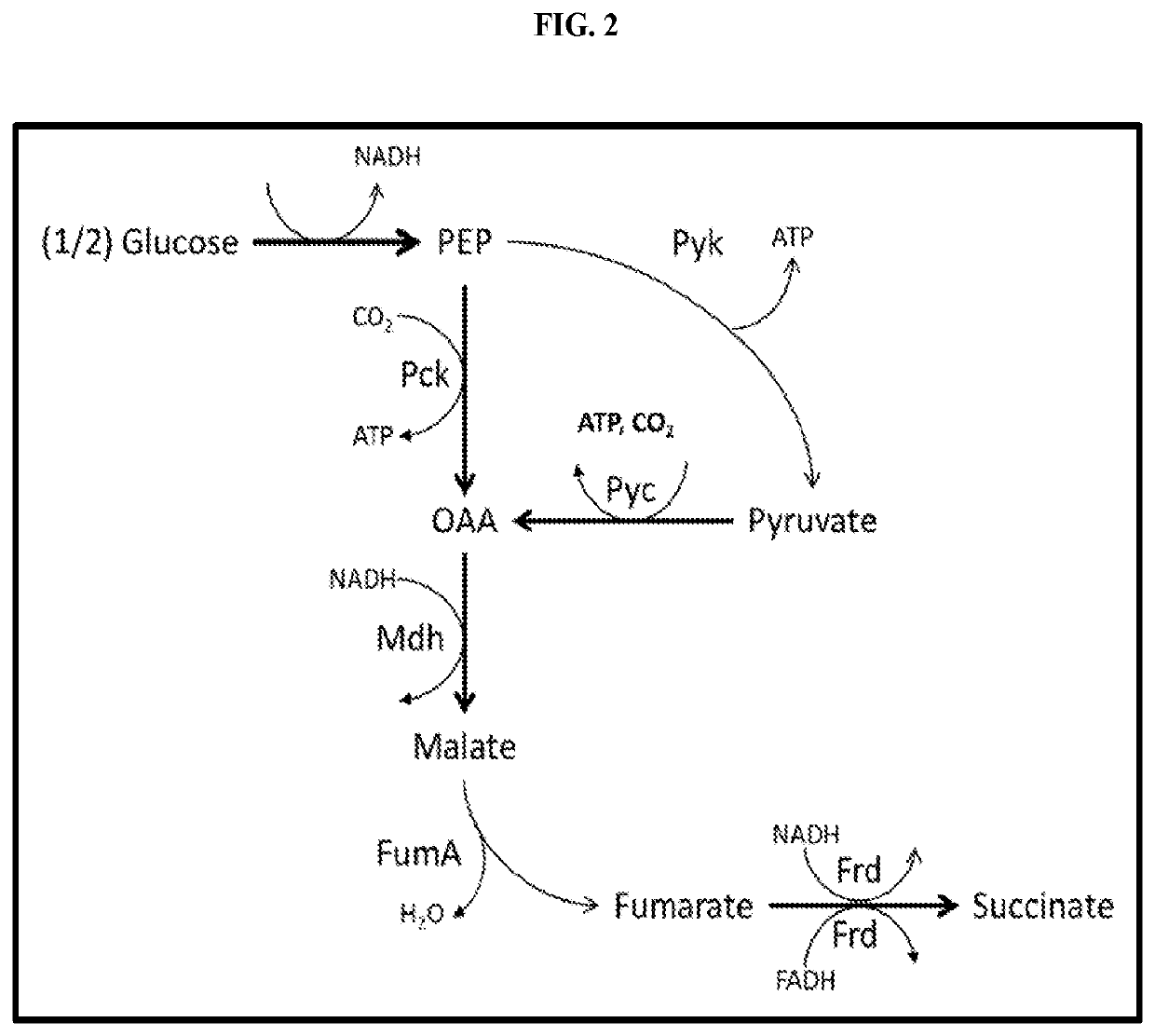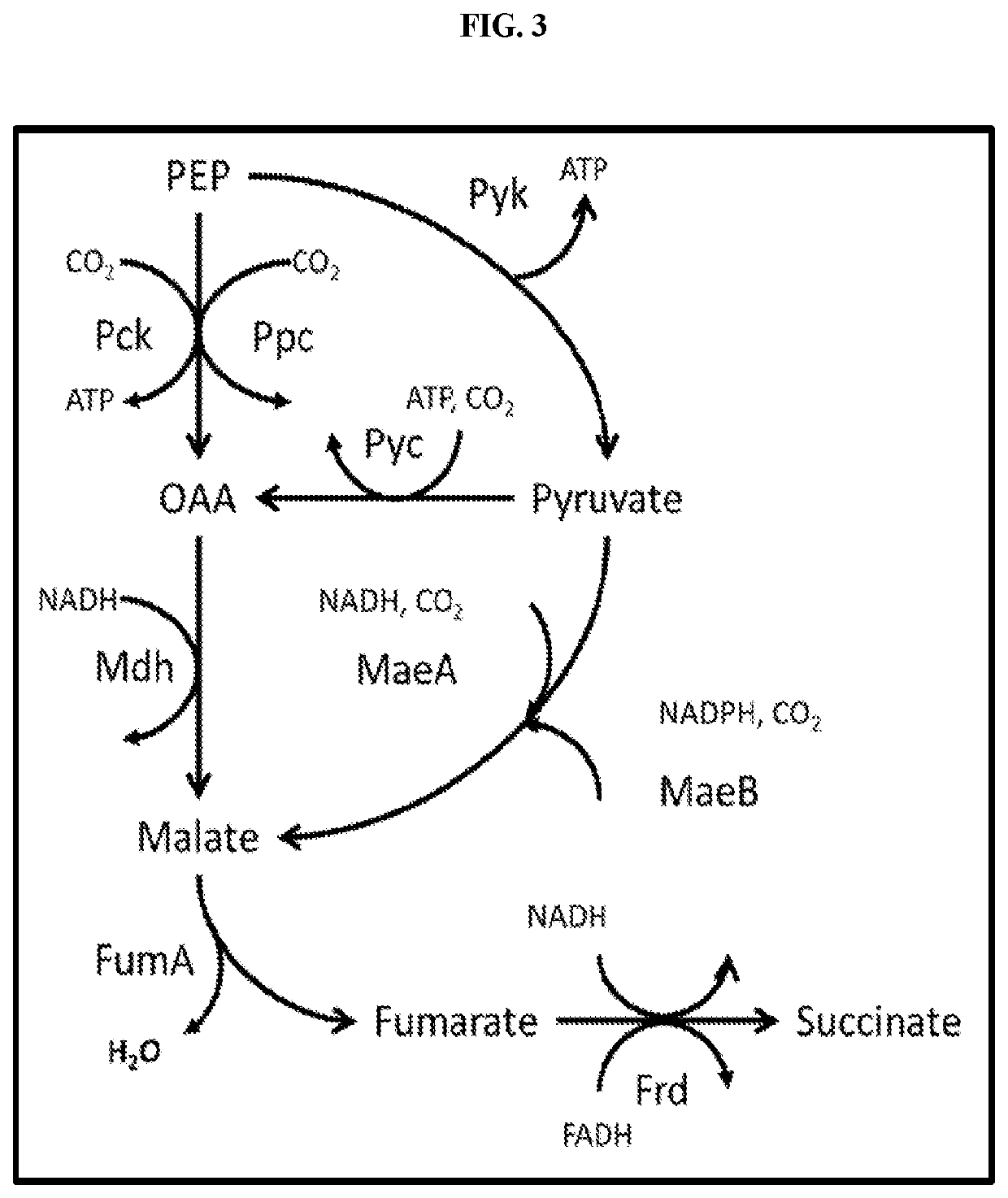Genetically modified yeast with increased succinic acid production
a technology of genetically modified yeast and succinic acid, which is applied in the direction of oxidoreductases, vector-based foreign material introduction, dna/rna fragmentation, etc., can solve the problems of insufficient recognition or address of prior art, the succinate produced from the tca cycle is not easily transported outside of the mitochondria and hence outside the cell, and the production of fermentation requires potentially costly downstream processing to provide the free acid form, etc. , to achieve the effect o
- Summary
- Abstract
- Description
- Claims
- Application Information
AI Technical Summary
Benefits of technology
Problems solved by technology
Method used
Image
Examples
example 1
Installation of the Reductive TCA Branch
[0050]In yeast, the enzymes involved in the TCA cycle are targeted to the mitochondrion. Glycolysis up to pyruvate and oxaloacetate production occurs in the cytoplasm. In order to have an optimal succinate production route, it is preferred to have all necessary enzymes in the cytoplasm. For a cytoplasmic reductive TCA branch the MDH, FUM, and FRD enzymes should all be localized to the cytoplasm. This can be achieved by expressing bacterial genes that lack a mitochondrial targeting sequence, or by eliminating the mitochondrial target sequence found in yeast proteins. Additionally, increased PCK activity is also desired to produce a more energetically favorable route to succinate. High activity of MDH, FUM, FRD, and PCK can be achieved by linking the expression of the genes with high strength promoters. Examples of such high strength promoters include, but are not limited to, PDC, TDH (triose phosphate dehydrogenase), ENO (enolase), TPI (triose ...
example 2
Succinate Pathway with Increased Flux Through the Pentose Phosphate Pathway and Elimination or Reduction of PGI Activity
[0052]Once the host strain has been constructed with expression of the reductive TCA branch, additional reducing equivalents are needed for a high yielding succinate pathway. One way that additional reducing equivalents can be produced is by the redirection of carbon flux through the pentose phosphate pathway (PPP). At least a partial redirection can be achieved by increasing the activity of glucose-6-phosphate dehydrogenase (ZWF) using methods for overexpression described earlier. A more complete redirection of carbon can be achieved by the decreasing or deletion of glucose-6-phosphate isomerase (PGI) activity. The deletion results in the highest production of NADPH through the PPP when growing on glucose. In another embodiment, both an increase in ZWF, PGL, and / or GND activity, and an elimination or reduction in glucose-6-phosphate isomerase is engineered into th...
example 3
Exogenous Route to Acetyl-CoA by PFL
[0055]Reducing equivalents needed for balancing the reductive TCA branch can also be generated by running the glyoxolate shunt. Natively, the glyoxolate shunt provides a way for cells to grow on acetate or 2-carbon units as a sole carbon source. The glyoxolate shunt begins with the formation of citrate from acetyl-CoA and oxaloacetate by citrate lyase (CIT). Then, isocitrate is produced from citrate by aconitase (ACO). Isocitrate lyase (ICL) converts isocitrate into glyoxolate and succinate. Malate synthase (MLS) condenses acetyl-CoA and glyoxylate to form malate. The malate produced is then further converted to succinate by FUM and FRD. Cytosolic acetyl-CoA is normally produced in yeast via PDC. However, in yeast engineered for products other than ethanol, the PDC is typically inactivated. This presents the cell with the difficulty of producing cytosolic acetyl-CoA. This can be achieved by utilizing mitochondrially produced acetate and transporti...
PUM
| Property | Measurement | Unit |
|---|---|---|
| succinic acid production | aaaaa | aaaaa |
| volume | aaaaa | aaaaa |
| pH | aaaaa | aaaaa |
Abstract
Description
Claims
Application Information
 Login to View More
Login to View More - R&D
- Intellectual Property
- Life Sciences
- Materials
- Tech Scout
- Unparalleled Data Quality
- Higher Quality Content
- 60% Fewer Hallucinations
Browse by: Latest US Patents, China's latest patents, Technical Efficacy Thesaurus, Application Domain, Technology Topic, Popular Technical Reports.
© 2025 PatSnap. All rights reserved.Legal|Privacy policy|Modern Slavery Act Transparency Statement|Sitemap|About US| Contact US: help@patsnap.com



